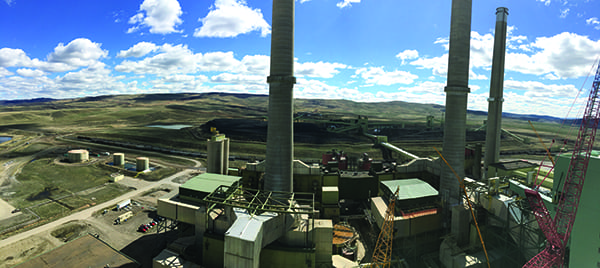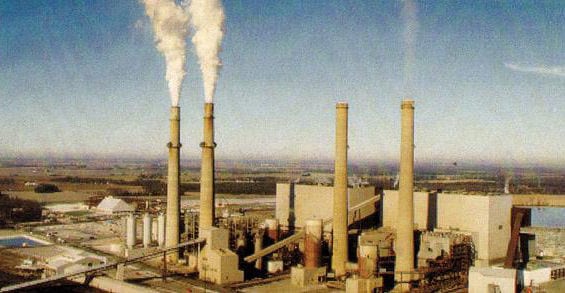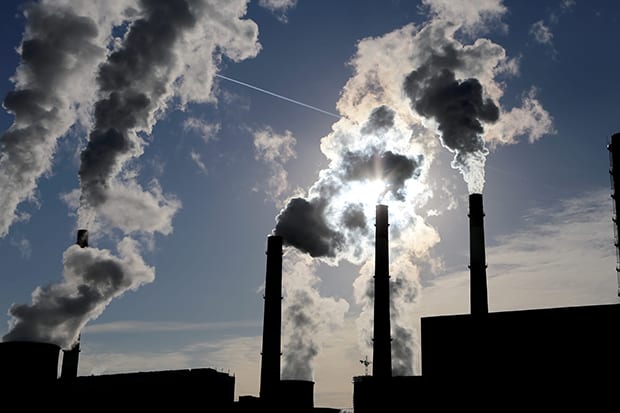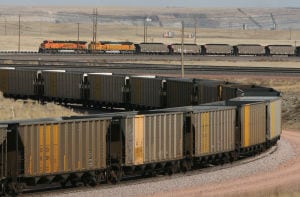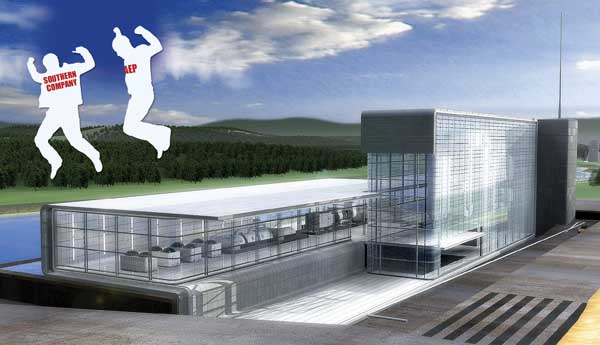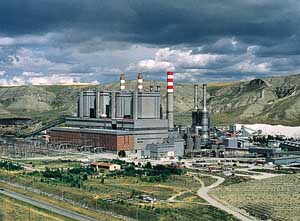The U.S. Department of Energy (DOE) said it will provide $109.5 million in funding for projects that directly support job creation in communities impacted by the energy transition, particularly for workers and areas struggling due to closures of coal-fired power plants and coal mines.
The DOE in the April 23 announcement, made in connection with a White House report on economic revitalization in coal and power plant communities, said the financial support is among the “first results of a government-wide initiative launched by President Biden in the first week of his administration to boost the economic potential of coal and power plant communities.”
The White House Interagency Working Group on Coal and Power Plant Communities and Economic Revitalization, which is part of the DOE, also announced it has chosen an executive director—Brian Anderson, longtime West Virginia resident and director of the National Energy Technology Laboratory (NETL)— to lead its efforts.
“The coal and power plant workers who built our nation can play a huge role in making America’s clean energy future a reality, and this report outlines just the first steps the Biden administration is taking to make sure they have those opportunities—right in their communities,” said Secretary of Energy Jennifer Granholm. “This new DOE funding will help spark next-generation industries that these workers can not only participate in, but lead, and I look forward to working together on investments and strategies that empower, revitalize, and retain and create jobs in our energy communities.”
Sen. Joe Manchin, a Democrat from West Virginia, which is among the state’s most impacted by the power generation industry’s move away from coal, said, “For generations, our coal miners have sacrificed their health and safety to mine the coal that forged the steel and provided the power that made the United States the greatest nation in the world. I am encouraged to see President Biden acknowledge these contributions and start to allocate the resources that will be required to reinvest in these communities who have suffered huge job losses.”
Manchin continued: “I applaud today’s funding announcements for innovative technologies to tackle climate change and provide new opportunities for these hard-hit areas. In addition, the up to $15 million investment in important research conducted at West Virginia University [WVU] is a small but first step in the right direction and I will continue working with the administration to ensure additional, significant investments throughout West Virginia to provide meaningful opportunity and economic growth.”
Expertise in Carbon Management
Anderson, who as NETL director oversees facilities in Morgantown, West Virginia; Pittsburgh, Pennsylvania; and Albany, Oregon, has “extensive expertise in technology development for carbon management in hard-to-decarbonize sectors,” according to DOE. The DOE also said it has identified senior staff from its Office of Economic Impact and Diversity, Office of Energy Jobs, and Office of Indian Energy, who will also support the work of the Interagency Working Group.
“It is a great honor to be named executive director of this essential effort,” said Anderson. “I am excited to immediately begin this important work, reaching across the agencies of the federal government to ensure that the economies of traditional energy and power plant communities are strengthened, and my first priority will be to engage people where they work and live so that these hard-hit communities have a hand in developing opportunities and solutions for their future.”
The Interagency Working Group on Friday said its report complements government investments in hydrogen, carbon capture, and environmental remediation proposed in the American Jobs Plan. The group said it has developed “a national roadmap” that outlines partnerships with local communities “to ensure the shift to a clean energy economy creates good-paying union jobs, spurs economic revitalization, and supports energy workers in coal, oil and gas, and power plant communities.”
The group said it recommends creating jobs through remediation projects for abandoned oil and gas wells, and shuttered coal mines, which it said are “well-suited” for displaced energy workers. It said such remediation also enables “economic development of under-utilized land.”
Carbon Capture and Hydrogen
The report also calls for investment in carbon capture and hydrogen technologies to support low-carbon industries. Specific funding in the $109.5 million package announced Friday includes:
- A $75 million funding opportunity to engineer carbon capture projects. The money will support customized engineering designs to install carbon capture and storage technology at power plants and industrial facilities. The DOE said retrofitting with carbon capture technology “could employ a similar workforce that exists today in energy communities and position American industry to compete in a global economy that is rapidly turning toward decarbonization.”
- Support also includes $19.5 million in financial awards for critical mineral extraction from coal and associated waste streams. The DOE said “critical minerals are vital to the manufacture of batteries, magnets, and other important components for making [the] electric vehicles fleet and other clean energy technology. Coal communities and workers could be well-positioned to see new industrial jobs extracting critical materials from the waste left behind by coal mining and coal power plants in many areas.”
- The DOE also will make available $15 million for geothermal energy research projects at WVU and Sandia National Laboratories. The DOE said the money will support “two projects to help drive down costs and risks associated with the discovery of new geothermal resources for power production and heating-cooling. [WVU] will use the funding to explore year-round deep-direct use heating and cooling on campus. Sandia National Laboratories will use innovative approaches to conduct electromagnetic surveys to refine geothermal exploration methods and aid drillers as they explore for geothermal energy in the western United States, a potential opportunity to create jobs for laid-off oil and gas workers.”
The Interagency Working Group also identified about $38 billion in existing federal funding “that could be accessed by energy communities for infrastructure, environmental remediation, union job creation, community revitalization, and jobs well-suited to support hard-hit energy communities.” The DOE’s Loan Programs Office said it has released a factsheet “to facilitate access to $8.5 billion in funding for deployment of carbon capture technology to enable low-carbon manufacturing of cement, steel, and other industrial products in addition to power plants.”
—Darrell Proctor is associate editor for POWER (@POWERmagazine).









